

REGNO DI RA-MU. Mu (EN) Wikipedia. Mu is the name of a suggested lost continent whose concept and the name were proposed by 19th-century traveler and writer Augustus Le Plongeon, who claimed that several ancient civilizations, such as those of Egypt and Mesoamerica, were created by refugees from Mu—which he located in the Atlantic Ocean.[1] This concept was popularized and expanded by James Churchward, who asserted that Mu was once located in the Pacific.[2] The mythical idea of Mu first appeared in the works of Augustus Le Plongeon (1825–1908), after his investigations of the Maya ruins in Yucatán.[1] He claimed that he had translated the ancient Mayan writings, which supposedly showed that the Maya of Yucatán were older than the later civilizations of Greece and Egypt, and additionally told the story of an even older continent.
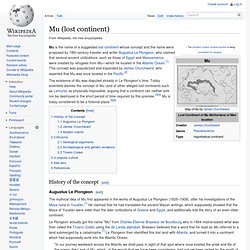
Le Plongeon actually got the name "Mu" from Charles Étienne Brasseur de Bourbourg who in 1864 mistranslated what was then called the Troano Codex using the de Landa alphabet. Robert Charroux. Robert Charroux was the best-known pen-name of Robert Joseph Grugeau (April 7, 1909 - June 24, 1978).[1] He was a French author known for his ancient astronaut theories and writings in other fringe subjects.
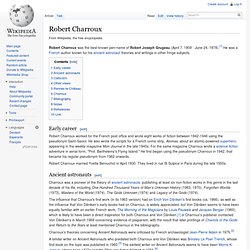
Early career[edit] Robert Charroux worked for the French post office and wrote eight works of fiction between 1942-1946 using the pseudonym Saint-Saviol. Helena Petrovna Blavatsky. Da Wikipedia, l'enciclopedia libera.

Elena Petrovna Blavatsky nel 1877. Lemuria. Da Wikipedia, l'enciclopedia libera.
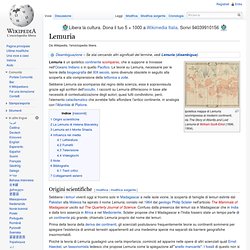
Ipotetica mappa di Lemuria sovrimpressa ai moderni continenti, da The Story of Atlantis and Lost Lemuria di William Scott-Elliot (1896, 1904). William Niven. William Niven (2 October 1850 – 2 June 1937) was a mineralogist and archeologist noted for his discovery of the minerals yttrialite, thorogummite, aguilarite and nivenite (named after him), as well as a set of controversial tablets.
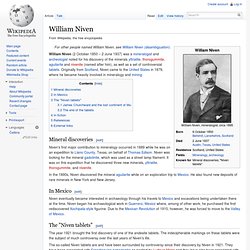
Originally from Scotland, Niven came to the United States in 1879, where he became heavily involved in mineralogy and mining. Mineral discoveries[edit] Biografia NIVEN. NIVEN, WILLIAM (1850–1937).

William Niven, mineralogist and archeologist, son of William and Sarah (Brown) Niven, was born in Bellshill, Lanarkshire, Scotland, on October 6, 1850. He came to the United States in 1879 and worked as a mineralogist. He was an assistant commissioner to the World's Industrial and Cotton Centennial at New Orleans in 1884–85 and arranged an exhibition of minerals from the Arizona territory. CHURCHWARD (wiki-EN) James Churchward James Churchward (February 27, 1851 – January 4, 1936) is best known as a British born occult writer.
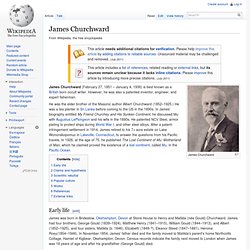
However, he was also a patented inventor, engineer, and expert fisherman. Early life[edit] My-Mu.com: Index. KOLOSIMO (wiki-IT) Da Wikipedia, l'enciclopedia libera.

Peter Kolosimo con la moglie Caterina nella loro casa di Torino, circa 1972. Biografia Kolosimo. Di grande interesse per la città di Bolzano la figura storica e letteraria dello scrittore Peter Kolosimo, il quale ha vissuto a Bolzano per più di 15 anni. Rosa Croce. Da Wikipedia, l'enciclopedia libera.
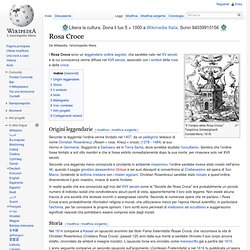
"Il Tempio della Rosa Croce," Teophilus Schweighardt Constantiens, 1618 Origini leggendarie[modifica | modifica sorgente] Secondo la leggenda l'ordine venne fondato nel 1407, da un pellegrino tedesco di nome Christian Rosenkreuz (Rosen = rosa; Kreuz = croce) (1378 - 1484) al suo ritorno in Germania. Soggiornò a Damasco ed in Terra Santa, dove avrebbe studiato l'occultismo. Sembra che l'ordine fosse limitato a soli otto membri e che si fosse estinto immediatamente dopo la sua morte, per rinascere solo nel XVII secolo. Esoteriche: Il continente Mu. Lemuria (EN) Wikipedia. The idea of Lemuria was subsequently incorporated into the proto-New Age philosophy of Theosophy and subsequently into general fringe belief.
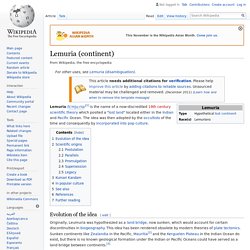
Accounts of Lemuria here differ. All share a common belief that a continent existed in ancient times and sank beneath the ocean as a result of a geological, often cataclysmic, change, such as pole shift, which such theorists anticipate will destroy and transform the modern world. Other scientists hypothesized that Lemuria had extended across parts of the Pacific oceans, seeking to explain the distribution of various species across Asia and the Americas.
The Lemuria theory disappeared completely from conventional scientific consideration after the theories of plate tectonics and continental drift were accepted by the larger scientific community. Some Tamil writers such as Devaneya Pavanar have associated Lemuria with Kumari Kandam, a legendary sunken landmass mentioned in the Tamil literature, claiming that it was the cradle of civilization. Esoteriche: Il continente Lemuria - Il continente Lemuria ha ospitato la prima civiltà umana di cui si abbia notizia. La nascita vera e propria del continente avvenne in ambito scientifico. Ne fu per la prima volta ipotizzata l'esistenza da M.P.L.Sclater, il quale, tra il 1850 e il 1860, sostenne che in epoche preistoriche esistesse una vasta area che comprendeva territori dal Madagascar a Ceylon e Sumatra. L'idea di un antico continente in queste zone del pianeta fu suggerita da affinità zoologiche tra i territori sopraccitati, tra cui la presenza del lemure che diede il nome al continente.
LE PLONGEON (wiki-EN) Augustus Le Plongeon (May 4, 1825 – December 13, 1908) was a British-American photographer and antiquarian who studied the pre-Columbian ruins of America, particularly those of the Maya civilization on the northern Yucatán Peninsula. While his writings contain many controversial notions that were discredited by later researchers(none of which are identified), Le Plongeon left a lasting legacy in his photographs documenting the ancient ruins. He should also be regarded as one of the earliest proponents of Mayanism. Le Plongeon wrote a lengthy history of Maya culture, going so far as to propose a theory that Maya had been in touch with the lost continent of Atlantis and were ancestral to Ancient Egypt, a theory which has since been challenged by the scientific community(no citations). Le Plongeon: Early Mayanist, archaeologist, and photographer. Augustus Le Plongeon - Massone. Rudolf Steiner. Books. Lemuria Books book list updated December 2006 Books About Lemuria Throughout history, various authors have attempted to uncover, unravel, understand and remember the civilization we know as Lemuria.
This is no easy task. Any kind of Lemurian "factual" information is based on assumed information of which the source could be virtually anything. Not only that, but Lemuria existed so long ago that it is amazing any information at all can be gleaned from history. We are now experiencing a resurgence in interest in all things Lemurian, as people begin to remember that perhaps their connection to this ancient civilization may in fact be more direct and meaningful than previously thought. HANCOCK (wiki-EN) Graham Hancock (born 2 August 1950) is a British writer and journalist.
Hancock specialises in unconventional theories[1] involving ancient civilizations, stone monuments or megaliths, altered states of consciousness, ancient myths and astronomical/astrological data from the past. One of the main themes running through many of his books is a posited global connection with a "mother culture" from which he believes all ancient historical civilizations sprang.[2] Biography[edit] Works[edit] Hancock sees himself as a journalist who asks questions based upon observation and as someone who provides a counterbalance to what he perceives as the "unquestioned" acceptance and support given to orthodox views by the education system, the media, and by society at large.[3] Prior to 1990 his works dealt mainly with problems of economic and social development.
Edgar Cayce. CICAP.